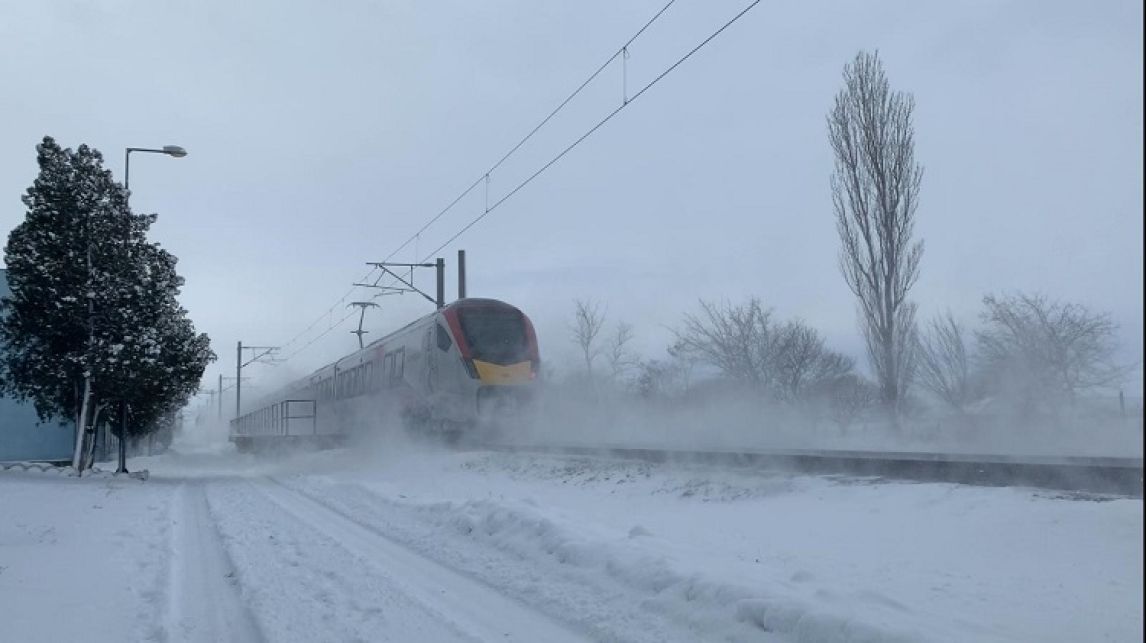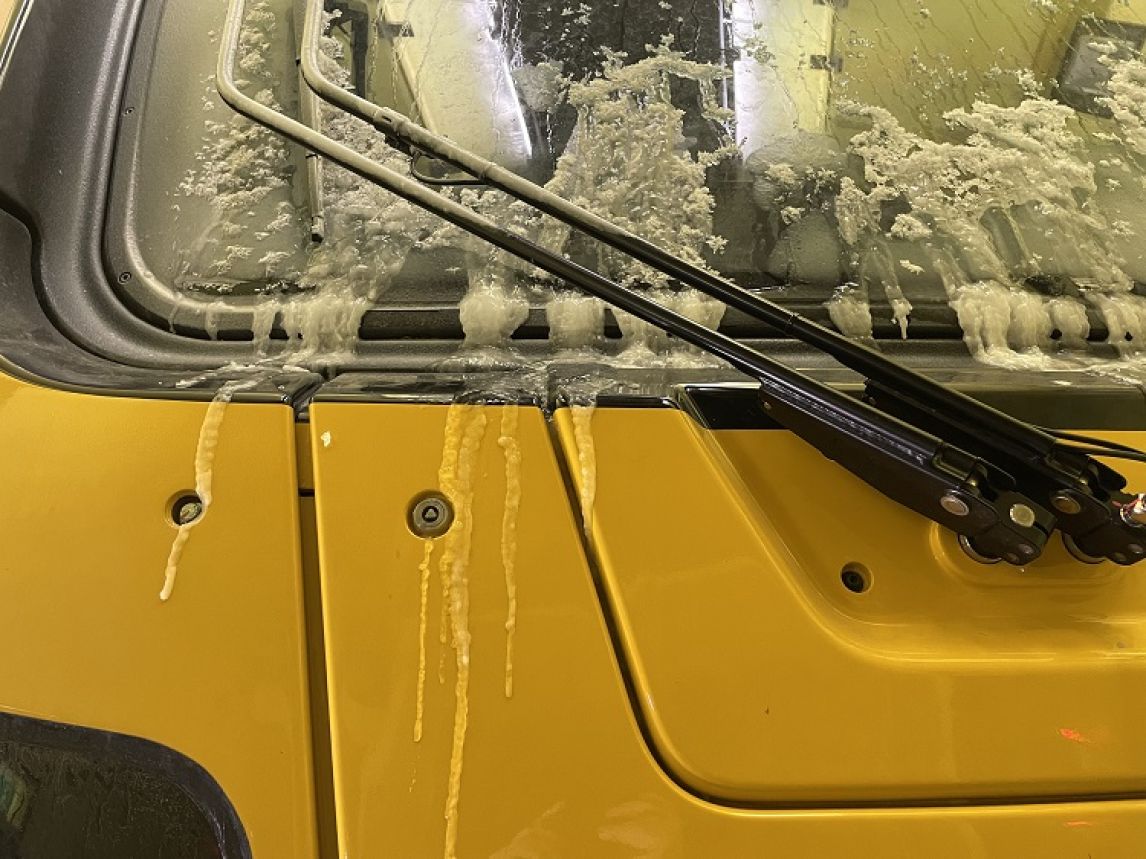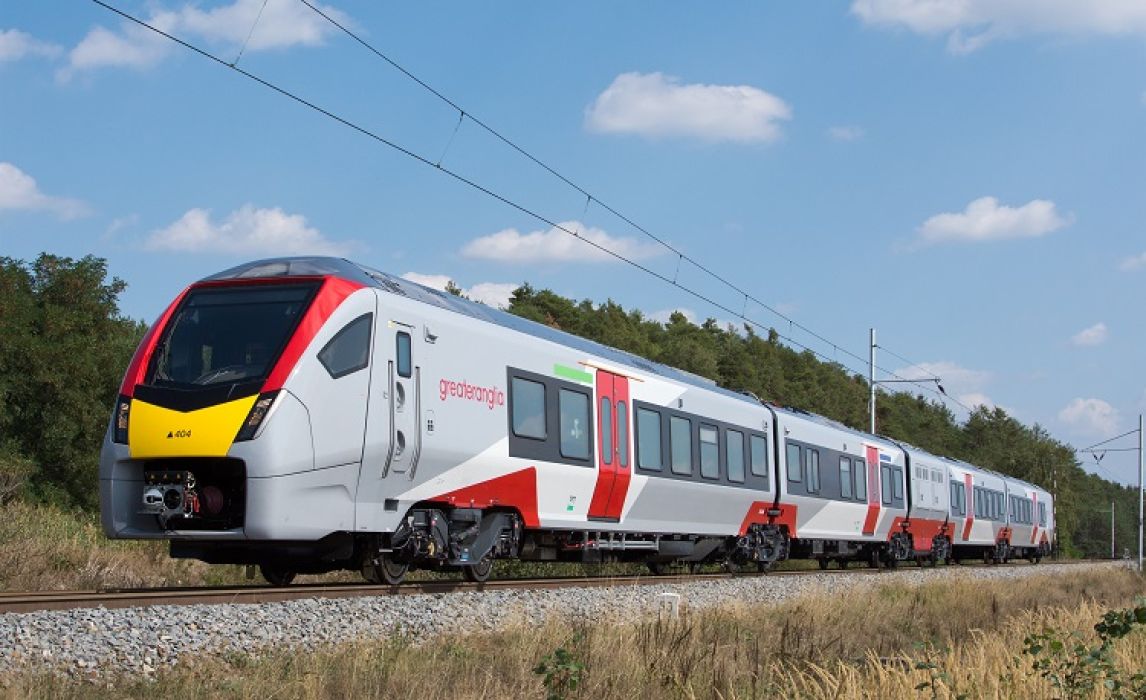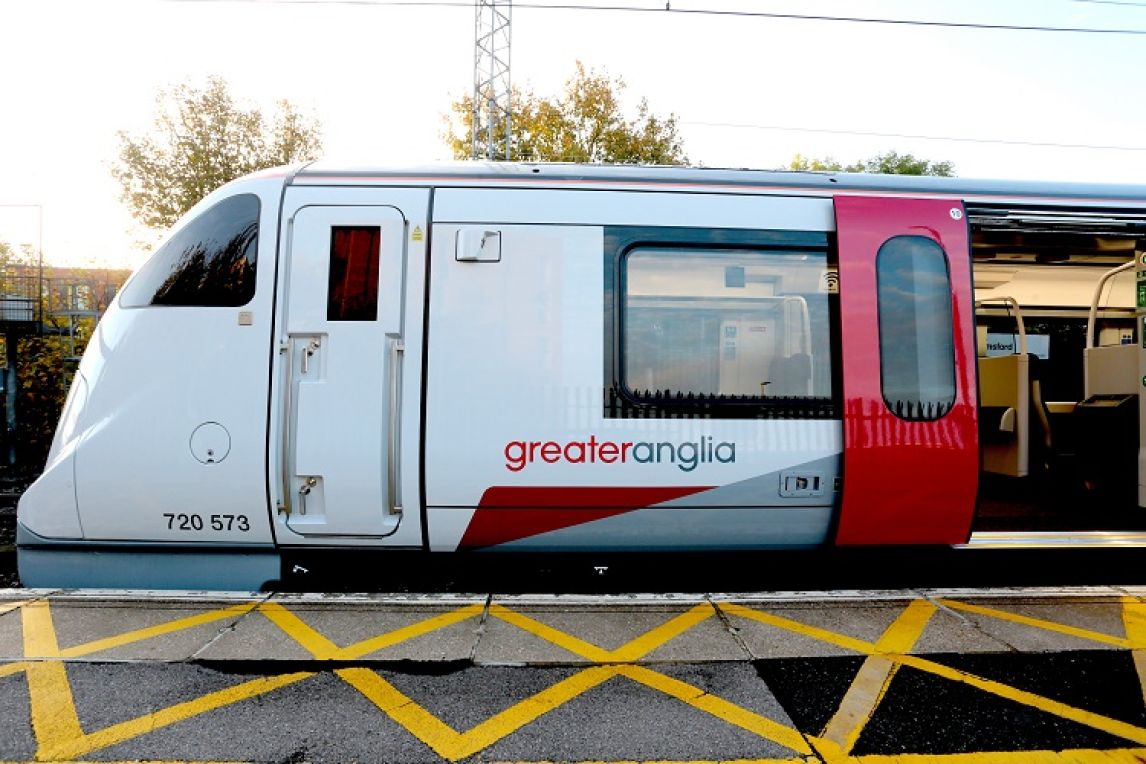Published on: Wednesday, 7 December 2022
Last updated: Wednesday, 7 December 2022
A Stansted Express Stadler train on test in the snow in Faurei, Romania. Credit: Greater Anglia/Simon Busser
Did you know that Greater Anglia’s new trains are tested in extreme weather conditions and have special features so passengers can enjoy comfortable and reliable journeys all year round?
From being sent to an industrial freezer to being blasted with water to check for leaks, no stone is left unturned to ensure that the company’s new fleet of 191 trains will perform as reliably as possible.
Being ready for winter and bitter temperatures is a key focus of the whole of the rail industry in the UK - and Greater Anglia is no exception.
As part of the rigorous testing requirements for a new set of trains, a carriage is transported to Vienna, Austria and put into a special chamber in a process called ‘climatic testing’ to ensure it can withstand a freezing chill.
The chamber is taken down to a temperature of -25°C, with ice forming on the carriage windows and bodywork while engineers, wrapped up in hats, scarves and gloves, check that all systems work as expected.
Checks are carried out on CCTV cameras, heating and cooling systems, electronic information displays inside and outside the train, windscreen wipers, demisters, motors, brakes and doors to makes sure they can work in sub-zero temperatures.
Ice on the windscreen of an Alstom-built commuter train in the climatic testing chamber. Credit: Greater Anglia
All of Greater Anglia’s new trains are also equipped with snow brakes. This system applies the brakes very gently on each set of wheels throughout the train in turn automatically, like dominoes, ensuring that heat is put into the brakes and that they can still stop the train very quickly on the coldest of days. Couplers, which allow two trains to be joined together, are also heated to prevent delays when another train is attached.
Meanwhile, modern heating systems inside the train keep customers warm and comfortable.
It isn’t just the winter that can pose a challenge though. Torrential rain can hit at any time in the UK and to test how a train handles it, every train undergoes an extreme wet weather check. The company’s new commuter trains, for example, pass through a specially designed rig which blasts water at it from a variety of angles at high velocity, with engineers checking panels and systems inside the train for leaks.
Spring and summer can bring warmer, sometimes sweltering conditions, but customers can remain nicely cool with air conditioning that circulates cold air throughout the train every six to nine minutes. Underfloor heating on Greater Anglia’s new commuter trains stops any cold spots forming. The system is self-monitoring so automatically adjusts the temperature to help with comfort inside the carriage.
A Stadler-built bi-mode train, in use on Greater Anglia's regional routes. Credit: Greater Anglia
The heating and air conditioning system on the Stadler-built trains that run on services between London – Norwich, London – Stansted Airport and the regional network from Ipswich and Norwich, Cambridge and Marks Tey is also controlled automatically by the train.
On all of the new trains, the air conditioning system also balances the mix between fresh air and recirculated air to help use less energy.
Autumn, too, can sometimes bring its challenges through slippery rails.
As thousands of leaves fall onto the tracks, they stick to damp rails and passing trains compress them into a thin, slippery layer on the rail which – much like black ice on the roads – can affect braking distance, reducing grip and acceleration. This can ultimately cause delays as train drivers have to brake and accelerate more gently than normal.
Greater Anglia's Alstom-built commuter train. Credit: Greater Anglia
All of Greater Anglia’s new trains are fitted with the very latest Wheel Slide Protection (WSP) systems which have been thoroughly tested and developed over many years to be optimal and makes our trains resilient to the effects of slippery rails.
Like ABS in cars, WSP helps the trains’ wheels to brake more evenly in slippery conditions and stops them from locking up and sliding, preventing wheel damage and wear. Modern traction control systems stop the trains from slipping when accelerating too.
The trains come with an automatic sanding function that works when the brakes are applied, which releases sand, giving the steel wheels more grip in slippery conditions and making the brakes even more effective.
The company’s trains on the regional, Stansted Express and London to Norwich routes are also fitted with spring-loaded blocks on the wheels, similar to that on a mountain bike, that continually rub against the wheel, cleaning it of any debris.
Martin Beable, Greater Anglia’s engineering director, said: “It’s fantastic to have new modern trains that are tested so very vigorously to withstand everything that the British weather throws at them and with special features which keep customers comfortable in all seasons.
“We are one of the best performing train companies in the country and we – as always – will work hard to maintain these high standards, while we continue to bring the rest of our excellent new trains into service.”
Greater Anglia runs services between London Liverpool Street and Essex, Suffolk, Norfolk, Cambridgeshire and Hertfordshire and all of its new trains are longer with more seats than carriages of the company’s old trains.
They all come with USB and plug points, fast free Wi-Fi, air conditioning, improved accessibility features including an accessible toilet on every train, better passenger information screens and dedicated cycle spaces.
They also come with regenerative braking, which delivers energy back into the electrical supply network, rather than wasting the energy through heat as is the case with conventional systems.






